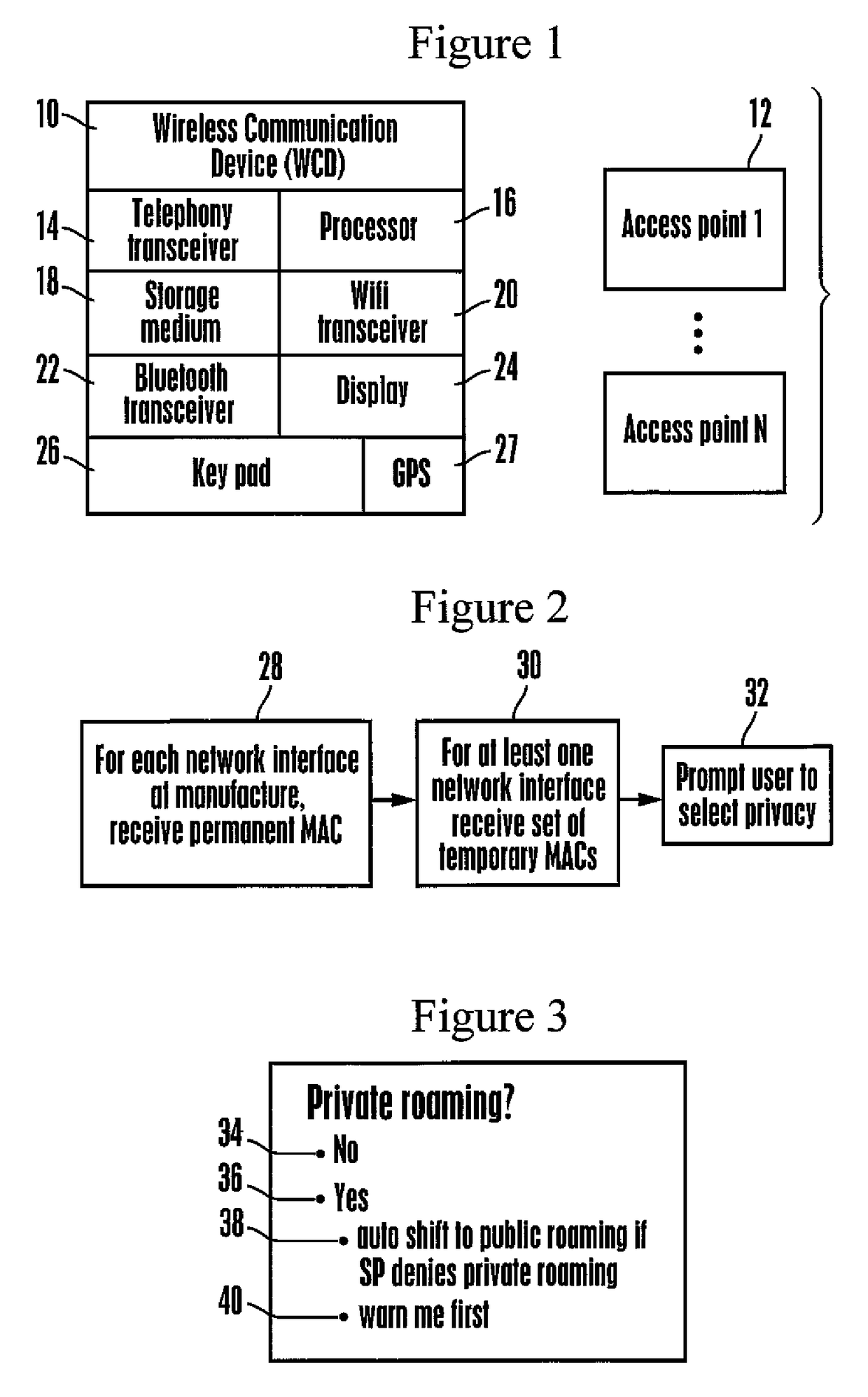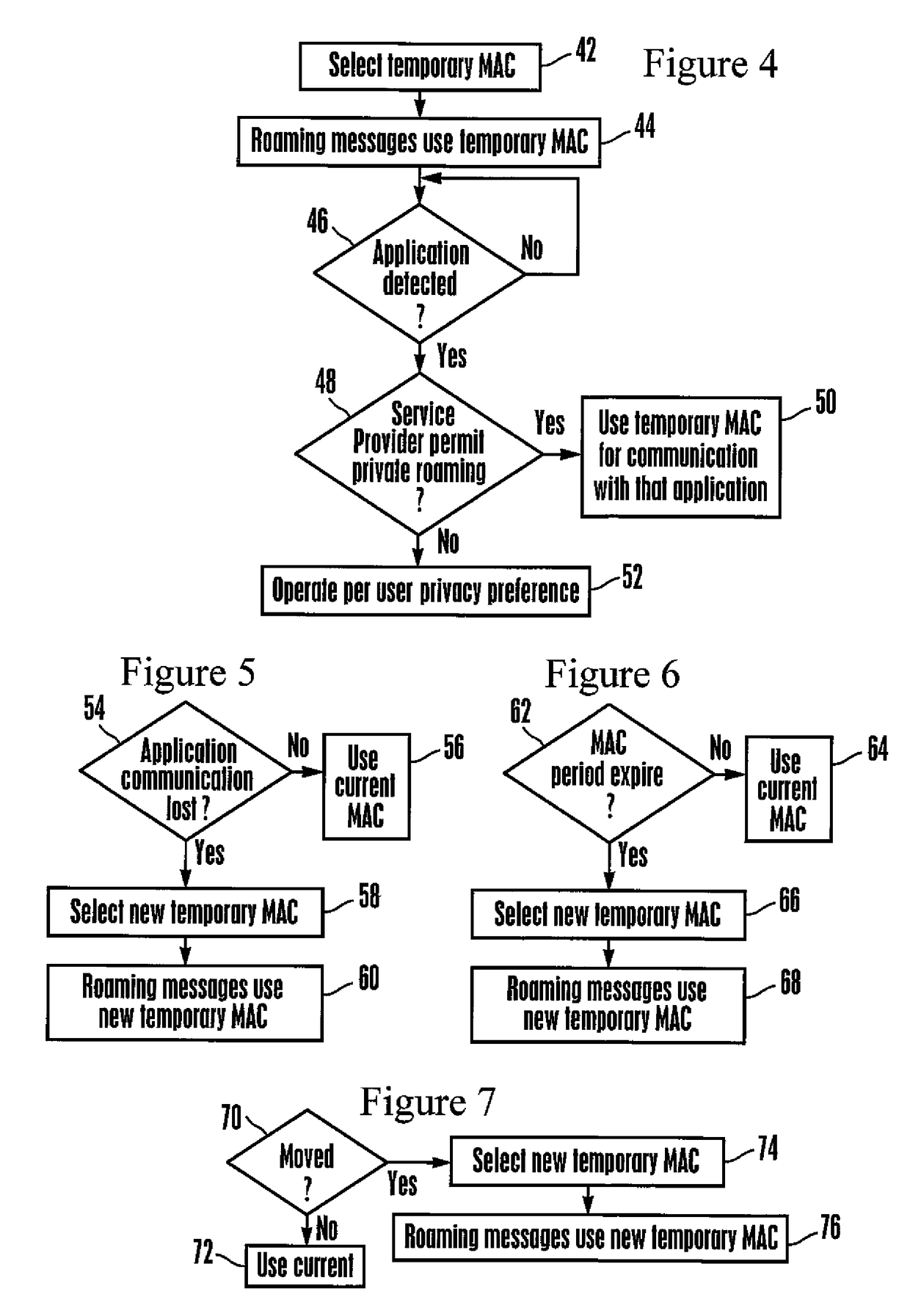Network discovery and connection using device addresses not correlated to a device
a network discovery and connection technology, applied in the direction of multi-digital computer combinations, electrical devices, transmission, etc., can solve the problems of not all shoppers are enthusiastic about being surreptitiously tracked every step of the way, and the potential for misusing pervasive, perpetual tracking information that ensnares most of the public, so as to prevent the correlation of addresses and less risk of surreptitious tracking
- Summary
- Abstract
- Description
- Claims
- Application Information
AI Technical Summary
Benefits of technology
Problems solved by technology
Method used
Image
Examples
Embodiment Construction
[0032]Referring initially to FIG. 1, a wireless communication device (WCD) 10 is shown configured for wireless communication with one or more wireless access points (WAP) 12 typically provided by a service provider (SP). Non-limiting examples of WCDs include wireless telephones, digital readers, cameras, laptop computers, notebook computers, smart watches and tablet computers.
[0033]In the example shown, the WCD 10 is a wireless telephone and so includes a wireless telephony transceiver 14 controlled by one or more WCD processors 16 accessing one or more computer readable storage media 18 such as read-only memory (ROM) and variants thereof, random access memory and variants thereof, and physically embodies as, for example, disk-based or solid-state storage. The telephony transceiver 14 may be, without limitation, a Global Systems for Mobile communication (GSM) transceiver and variants thereof, code division multiple access (CDMA) transceiver and variants thereof, frequency division m...
PUM
 Login to View More
Login to View More Abstract
Description
Claims
Application Information
 Login to View More
Login to View More - R&D
- Intellectual Property
- Life Sciences
- Materials
- Tech Scout
- Unparalleled Data Quality
- Higher Quality Content
- 60% Fewer Hallucinations
Browse by: Latest US Patents, China's latest patents, Technical Efficacy Thesaurus, Application Domain, Technology Topic, Popular Technical Reports.
© 2025 PatSnap. All rights reserved.Legal|Privacy policy|Modern Slavery Act Transparency Statement|Sitemap|About US| Contact US: help@patsnap.com



